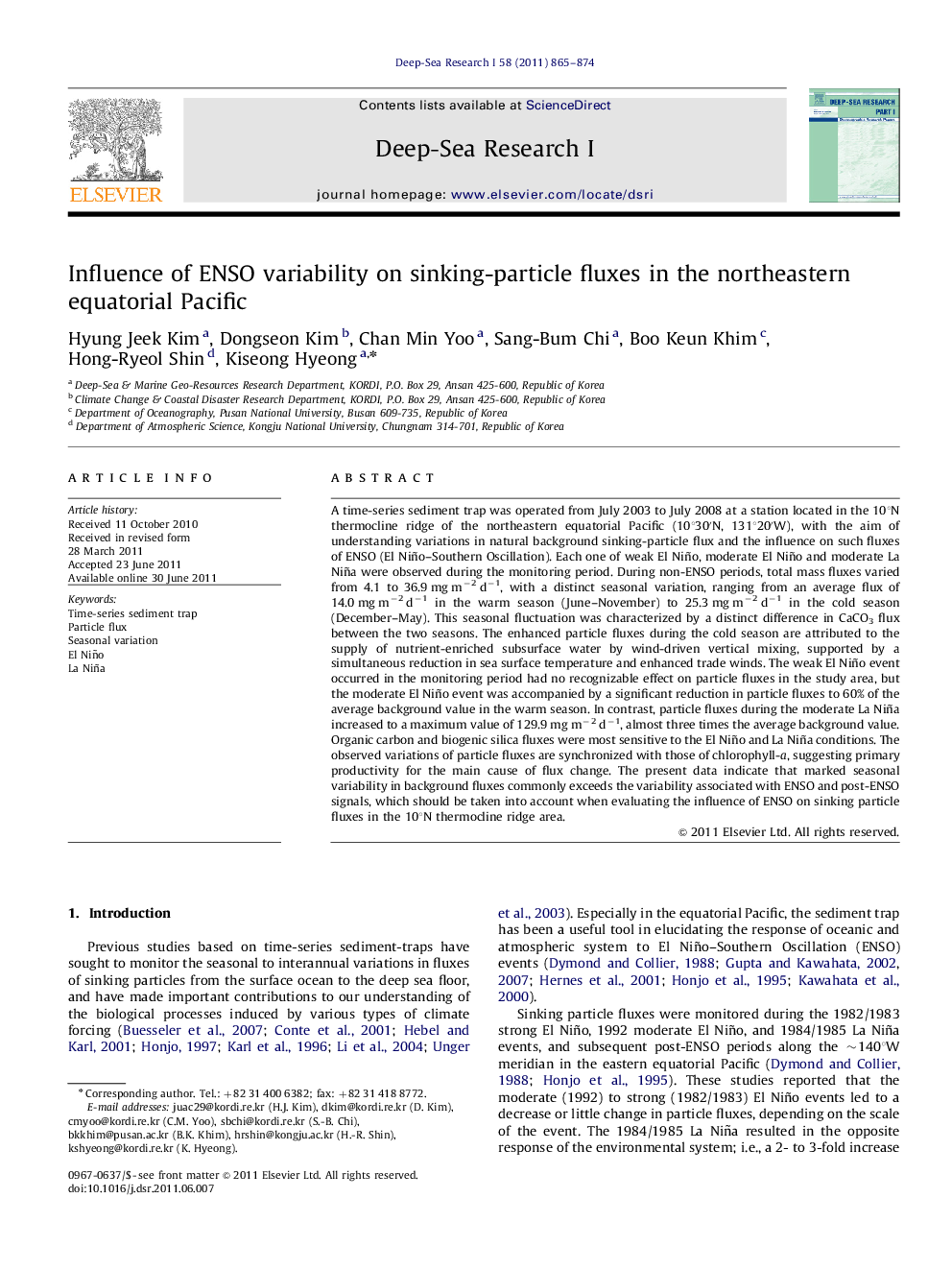| کد مقاله | کد نشریه | سال انتشار | مقاله انگلیسی | نسخه تمام متن |
|---|---|---|---|---|
| 4534886 | 1326067 | 2011 | 10 صفحه PDF | دانلود رایگان |

A time-series sediment trap was operated from July 2003 to July 2008 at a station located in the 10°N thermocline ridge of the northeastern equatorial Pacific (10°30′N, 131°20′W), with the aim of understanding variations in natural background sinking-particle flux and the influence on such fluxes of ENSO (El Niño–Southern Oscillation). Each one of weak El Niño, moderate El Niño and moderate La Niña were observed during the monitoring period. During non-ENSO periods, total mass fluxes varied from 4.1 to 36.9 mg m−2 d−1, with a distinct seasonal variation, ranging from an average flux of 14.0 mg m−2 d−1 in the warm season (June–November) to 25.3 mg m−2 d−1 in the cold season (December–May). This seasonal fluctuation was characterized by a distinct difference in CaCO3 flux between the two seasons. The enhanced particle fluxes during the cold season are attributed to the supply of nutrient-enriched subsurface water by wind-driven vertical mixing, supported by a simultaneous reduction in sea surface temperature and enhanced trade winds. The weak El Niño event occurred in the monitoring period had no recognizable effect on particle fluxes in the study area, but the moderate El Niño event was accompanied by a significant reduction in particle fluxes to 60% of the average background value in the warm season. In contrast, particle fluxes during the moderate La Niña increased to a maximum value of 129.9 mg m−2 d−1, almost three times the average background value. Organic carbon and biogenic silica fluxes were most sensitive to the El Niño and La Niña conditions. The observed variations of particle fluxes are synchronized with those of chlorophyll-a, suggesting primary productivity for the main cause of flux change. The present data indicate that marked seasonal variability in background fluxes commonly exceeds the variability associated with ENSO and post-ENSO signals, which should be taken into account when evaluating the influence of ENSO on sinking particle fluxes in the 10°N thermocline ridge area.
► Background particle fluxes at the 10°N thermocline ridge show a marked seasonal variability.
► The enhanced particle fluxes in the cold season are attributed to the wind-driven mixing.
► Background flux variability commonly exceeds the variability of ENSO and post-ENSO signals.
Journal: Deep Sea Research Part I: Oceanographic Research Papers - Volume 58, Issue 8, August 2011, Pages 865–874